Marcel van Marrewijk's Blog, page 48
May 1, 2019
Phoebe Tickell about the Future of Work – Today
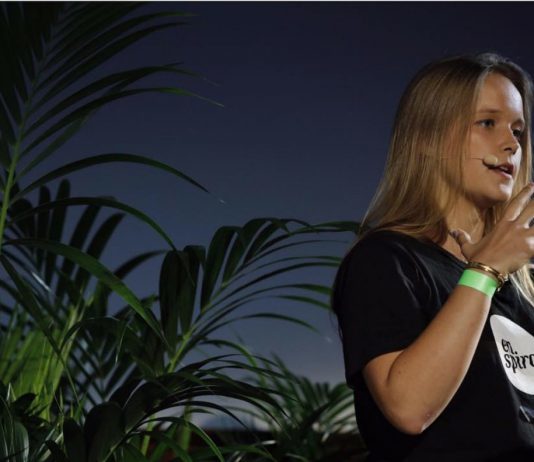
Phoebe Tickell is an experienced facilitator and design thinker, an expert in topics of decentralization, distributed governance and in ways of building a non-hierarchical organizational structure. Phoebe is going to be the second speaker at the “How about the Future of Work – Today” conference in London.
Here is our recent talk with Phoebe, so you can get to know her a little bit better!
Hi Phoebe! Could you tell us more about yourself? What is your background? What is the focus of your work at the moment?
Sure! I actually started life as a molecular biologist. There are a few people who make this joke about me going from engineering DNA of bacteria to engineering DNA of organizations. And I quite like that metaphor.
At the moment I am working with the organizations that are interested in changing the workplace culture and workplace governance. And those two things are very interconnected.
If you think about it, the majority of so many people’s lives is spent in the organizations. And yet, there is so little attention drawn to how we actually design that whole experience. There is this word “ergonomic”, which is used to describe something designed for more efficiency and comfort at a workplace. So, for example, if you have an ergonomic keyboard it makes it easier and healthier to type. So how can we make organizations more ergonomic and bring out human flourishing? – that is really my focus right now.
Why did you decide to take part in the Future of Work conference? Why do you think is it important to talk about it?
Well, I am really fond of the whole idea of Seats2meet and the concept of the Serendipity machine. Seats2meet is a kind of a connecting tissue for freelancers and entrepreneurs – a mechanism which is matching them together. Currently, we are seeing the rate of increase in freelance workers three times higher than the rate of increase of regular-employed workers. Some predictions are even saying that by 2030 everybody will be in the gig economy, meaning all workers will become freelance. So to me, all of the infrastructure that is being built for digital nomads, freelancers, entrepreneurs – so the technologies like Seats2meet – is totally part of the future and hence very interesting. The fact that Seats2meet is putting on this event means that I am keen on taking part in the conversation and curious to get to know the perspectives of other speakers: Christian Busch, who works a lot with the concept of serendipity, and Ronald van den Hoff, the founder of Seats2meet. All in all, I think its gonna be a great event!
What kind of questions/topics are you going to raise during the conference?
I’m going to talk about ways to create more human organizations, so about the topic of distributed governance. I’ll be raising the questions of how to decentralize those things like decision making, voting, etc; and how to find ways to make humans coordinating together through flat structures.
It’s important to understand that going to more human kind of organizations requires not just different structures but also a different culture. And the creation of a different culture happens only through practices. So I’m going to talk about those practices and elaborate on why changing culture is actually a key to changing the way things work in the organization.
Talking about the actual future of work, what would you personally like to see there (in the future)?
I would love to see more people working and living the way I am actually working and living right now, in other words, more of a distributed community, especially in big cities like London. I’d also love to see big companies and organizations become more open and offering more ways of engaging with and working together with.
Large organizations usually focus only on employing people full time, whilst the future of work lies in more flexible project-based positions. I believe that big companies which have a lot of resources, a lot of vision and historical thinking, should open their doors to freelancers and people who are more independent in their work and lifestyle, who do not necessarily want to join the company full time but are eager to contribute to a certain project.
Do you have any questions for the audience or anything extra you would like to add?
Going back to practising more horizontal work, I would ask people to think about what are the times and the experiences of their lives when they felt most empowered at work? What were the ingredients that gave them a sense of empowerment and a sense of agency?
Also, talking about horizontal practices, I would raise the question of transparency. Transparency is one of the areas of the “Going horizontal” methodology I am currently working on together with Samantha Slade. (“Going horizontal” is the book by Samantha Slade about ways of creating non-hierarchical organizational structures, that I would highly recommend reading to anyone, especially in anticipation of the upcoming event.) I find it peculiar that many of us value transparency a lot in theory, but when it comes to practice we usually have a more competitive and closed culture.
So maybe an interesting provocation would sound like: What would your company/organization look like if the policy was default to open and not default to close? What would it be like to work in an organization where all the salaries of the workers, all the finances of the company and the decision making processes were transparent?
I would be eager to explore the question why is it not that way and how would that be different if that was that way!
Thank you very much, Phoebe! Looking forward to seeing you next week!
Join us at “Ho w about the Future of Work – Today” in London on May 9th!
The post Phoebe Tickell about the Future of Work – Today appeared first on Seats2meet.
De 4 Wetten van ‘Success by Flop’
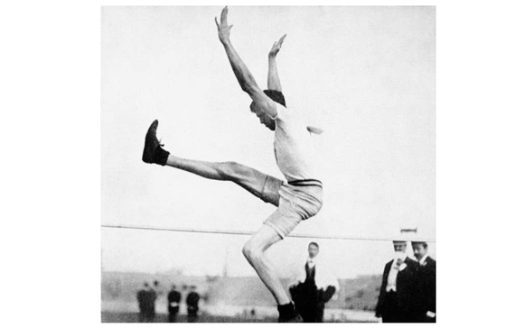
Ik schrijf jou geluk in drie delen:
inspiratie: de geluksman schrijft…
dóen: jouw geluksoefening
glimlach: geluksvitamine
deel 1: inspiratie
DE GELUKSMAN SCHRIJFT…
Tachtigduizend mensen houden de adem in. Stilte in het stadion, wereldwijd kijken miljoenen ogen mee via TV. Een aanloop. Een sprong. Een kreet. Een orkaan van gejuich breekt los. Een 21-jarige Amerikaan springt goud en breekt het Olympisch record. Het meest bizar: hij doet wat niemand eerder heeft gedaan, hij springt achterover over de lat en landt op zijn rug!
Mexico, october 1968: hoogspringer Dick Fosbury schrijft geschiedenis. Eeuwenlang sprongen atleten voorover over de lat. Tot Dick kwam:

Zijn ‘Fosbury Flop’ zet de springwereld op zijn kop. Alle wereldrecords na Dick zijn Flops, al 51 jaar. Dick is historisch, vandaag de dag zouden we hem een ‘(olympic) gamechanger’ noemen. Het boek over zijn leven heet zelfs ‘the Wizard of Foz’. Welke vier lessen kan een geluksman leren van Wizard Dick?

wet 1
Dick Fosbury was als springer geen hoogvlieger. Hij was op zijn 16e zelfs niet goed genoeg voor zijn schoolteam. Dick vond de bestaande springtechiek ingewikkeld. Zijn lijf kreeg het niet voor elkaar. Hij bleef trainen op de bestaande techniek, er was geen alternatief.
Hij experimenteerde, zocht continue andere wegen. Gelukkig werd hij geen kampioen met de oude sprong. Dan hadden we nu geen Flop gezien. Dick was gewoon niet goed genoeg voor medailles, dus bleef hij hardnekkig nieuwe wegen zoeken. Zijn lichaam vroeg om een andere sprong, die nog niet bestond.
Het geeft ons de eerste wet van succes:
“wordt geen kampioen”.
Wie snel prijzen wint, dut voortijdig in binnen de box. Innovatie volgt frustratie. Echte vernieuwing komt van ‘people who stay hungry, stay foolish’.
wet 2
Drie jaar zijn ze getrouwd, één kind, tweede op komst en nog steeds verliefd. Altijd als ze karbonade braadt, snijdt zij er een stukje vanaf, voor ze in de pan gaan. “Waarom doe je dat eigenlijk?” vraagt hij.
“Zo hoort het, mijn moeder deed het altijd zo.”
Twee weken later spreekt ze haar moeder: “Hee mam, jij snijdt altijd een stukje van de karbonade, waarom eigenlijk?” “Geen idee, mijn moeder deed het altijd zo.”
Ze bellen oma en vragen het haar. Oma schiet in de lach: wij hadden vroeger maar één braadpannetje, dat rode, weet je nog? Het was klein, de karbonaadjes pasten er nooit in.”
Het succes van Dick was ook een gelukje. Hoogspringers tot die tijd sprongen niet voor niks voorover: de landing was in een zandbak of in houtsnippers, je moest je val opvangen met je handen en voeten. Er waren meer mensen aan het experimenteren, maar landen op de rug was te pijnlijk. Toen Fosbury ging studeren, werd er voor het eerst gebruik gemaakt van een dik schuimrubber matras om te landen: de val werd een stuk korter, de landing zacht, hoe je ook terecht kwam. Dick was lucky: zijn school was één van de eerste met zo’n matras.
De werkelijkheid van het springen veranderde door het matras ingrijpend. Wie het zag, zag nieuwe mogelijkheden. De meesten bleven springen binnen de ongeschreven regels, die geen regels waren, maar gewoontes: ‘zo hoort het’. Fosbury verstond de kunst van het zien wat er verandert om je heen en daar positief gebruik van maken. Het geeft wet twee:
“laat je karbonade heel”
zodra het kan.
wet 3
Dick Fosbury heeft een typische aanloop: niet -zoals iedereen- in een rechte lijn, maar met een boog. Jaren had hij geoefend in de tuin: een touw gespannen tussen twee bomen en springen maar. Maar zijn tuin was klein en in het midden stond een forse eik. Zijn aanloop moest noodgedwongen in een boog eromheen. Obstakel eik bleek later een factor voor zijn succes.
Dit verhaal werd mij ooit verteld, of het waar is weet ik niet. Sommige verhalen zijn te mooi om niet door te geven. Iedereen onthoudt dit beeld van Dick in zijn tuin, en vooral de boodschap: obstakels en tegenspoed van vandaag blijken vaak een bron van het succes en geluk van morgen. Het leven is vol ‘blessings in disguise’. Wie zo kijkt, blijft licht als het donker is.
Vandaar de derde wet:
“zet een eik op je pad”

de vier wetten samengevat
Dick heeft ons met zijn Flop vier wetten van succes geschonken:
wordt geen kampioen
laat je karbonade heel
zet een eik op je pad
Ik gun jou dat het toepassen hiervan je iets brengt wat je nooit voor mogelijk had gehouden, dat jij jouw eigen olympisch record breekt. Het zou Dick’s medaille nóg meer glans geven. Een mooiere afsluiter van dit verhaal is er niet.
Ik hoor een stemmetje: ‘er waren toch vier wetten? Hij stopt bij drie?’ Die vierde wet is er zeker. Misschien de belangrijkste van dit verhaal:
“luister niet naar andermans wetten”.
Zelfs tot kort voor zijn olympisch goud, raadde iedereen Fosbury dringend aan om te stoppen met zijn rare fratsen. Vrienden, pers, coaches, ze zagen geen heil in zijn stijl. Journalisten beschreven hem spottend als ‘een two-legged camel’ en ‘the worlds laziest jumper’. Dick ging door. Zijn antwoord was zijn medaille.
Mensen die altijd schermen met ‘wetten’ en ‘ervaring’ zijn als chauffeurs die alleen in de achteruitkijkspiegel kijken. Wetmatigheden huizen in het verleden. Het woord zegt het al:
wet -> matig heden.
Hoe creëer je ooit iets nieuws als je oud denkt? Vandaar vanuit mijn hart mijn eigen geluksmanwet bij het Succes van Flop:
“Volg je Eigen Wijsheid, leef nooit volgens andermans wetten”
Zeker niet die van mij!
deel 2: dóen
JOUW GELUKSOEFENING
Dit is wat ik geloof:
“geluk is een dagelijkse serie kleine positieve gewoontes.”
Daarom ontwerp ik elk maggezien één kleine oefening voor jou, waarmee je je geluksspier traint:
Vandaag gaat ie over ’zet een eik op je pad’:
Ons leven is gebouwd uit patronen. Een patroon doorbreken is altijd zowel oncomfortabel, als een sprong in energie. Soms gebeurt het door de omstandigheden. Maar je kunt ook zelf ‘een eik plaatsen’ door iets wat je altijd doet onmogelijk te maken.
Mogelijkheden te over. Vergeet een dag je smartphone, vergader zonder agenda, laat iemand je autosleutels verbergen, reis een week zonder navigatie, regel een hele dag stroomstoring op je werk. Energie verzekerd!
De oefening:
bedenk elke dag een DADA (‘doe anders dan anders’) door iets in je vertrouwde omgeving te veranderen, wat een bestaand patroon onmogelijk maakt.
have fun!
deel 3: glimlach
GELUKSVITAMINE
Het leeft prettig als je elk moment van de dag jezelf kunt opbeuren, zodat je je glimlach terugpakt en weer ‘de lichtknop in je hoofd’ aan kunt zetten’. Kleine dingen helpen daarbij direct: beelden, filmpjes, een gedicht, een spreuk.
Vandaag deel ik een standbeeld:
Het pad van EigenWijze mensen gaat niet over rozen. Ze ontmoeten vaak meer hoon en onbegrip dan complimenten en applaus. De meesten halen ook geen medaille. Dick wel. Hij kreeg zelfs een standbeeld. Onder het motto
‘hoon vooraf, standbeeld toe’
deel ik dat plaatje. Voor mij is het een monument voor alle EigenWijzen.

Zie je hoe hoog dit is? Kun je je voorstellen? Iemand neemt een aanloop en zeilt over jou heen? Twee meter vierentwintig! Mensen kunnen veel, heel veel, elke grens wordt verlegd.
Ik zet mijn Vitamine P-filmpjes ook voor je op het youtubekanaal van de Geluksman , dan kun je er altijd bij. GewoonGeluksbeelden en -spreuken ga ik op GeluksmanInstagram zetten.
wil jij vaker gewoon geluk zien?
Train je geluksspier dagelijks en doe het op een prettige manier: samen met anderen! Honderden mensen doen dit al jaren, elke dag. Hun ervaringen lees je hier. Je bent welkom in het OneGoodThingCafé van de free happiness app HappyWe.
Verspreid dit Maggezien zoveel als je wil. Vertel erover. Deel het. Ga je gang, delen is vermenigvuldigen!
Leef mooi!
Chiel.
The post De 4 Wetten van ‘Success by Flop’ appeared first on Seats2meet.
5 onmisbare tips voor betere adviesgesprekken
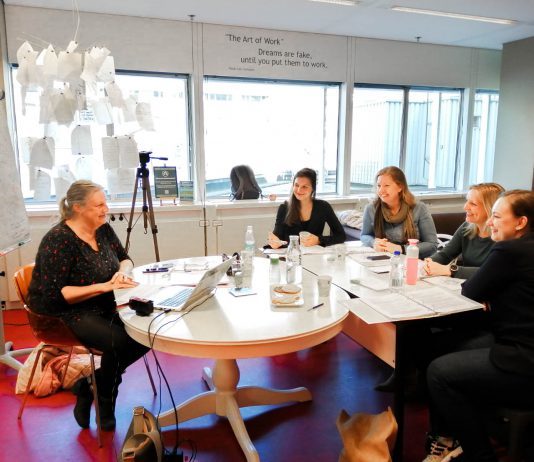
Dit artikel is geschreven door Anne-Pim van Oostveen.
Soms krijg je ongevraagd advies of wordt advies op een minder prettige manier aan je gegeven. Het kan gebeuren dat je hierdoor in een belangrijk gesprek niet tot de uitkomst komt die je gehoopt had. Of dat je niet tot een productieve samenwerking of een beslissing komt waar iedereen achter staat. Ben jij iemand die graag samenwerkt en plezier haalt uit het bereiken van een gezamenlijk doel? Onthoud dan deze vijf gouden tips voor advies:
Let op je non-verbale communicatie
Non-verbale communicatie is meer dan alleen je houding. Ook je stijl en uistraling zijn hier onderdeel van. Het is belangrijk je bewust te zijn van de kracht van non-verbale communicatie tijdens een gesprek, presentatie en in vergaderingen. Het aller belangrijkste is dat je boodschap congruent moet zijn. Je houding, stemgebruik en gebaren moeten in overeenstemming zijn met wat je verbaal overbrengt aan je publiek.
Zet jezelf op film
Om inzicht te krijgen in hoe jij overkomt op andere mensen is film het ideale medium. Jezelf terugzien kan best confronterend zijn. Je ziet jezelf ineens vanuit een ander perspectief. Hierdoor krijg je inzicht in je eigen gedrag, houding en intonatie. Pas als je je bewust bent van je gedrag kun je er wat aan veranderen.
Luister actief naar de ander
Een goede luisteraar is actief bezig om de essentie van de boodschap te achterhalen. Zo kom je er achter wat het belang is van de ander. Hiervoor bestaan drie technieken: vragen stellen, samenvatten en reflecteren. Vragen stellen zet de ander aan het denken en helpt om een vraagstuk te verhelderen. Met open vragen geef de ander ruimte om zijn gedachten uiteen te zetten in zijn eigen woorden. Samenvatten zorgt er voor dat de ander de kans krijgt om zijn geïnterpreteerde boodschap bij te stellen. Tenslotte kun je tijdens het luisteren reflecteren, hiermee laat je zien dat je probeert te begrijpen hoe de ander zich voelt.
Gebruik de Roos van Leary
De Roos van Leary is een handige tool om inzicht te krijgen in hoe mensen gelijktijdig elkaars gedachten, gevoelens en gedrag beïnvloeden. Dit model maakt het gedrag en tegengedrag van mensen inzichtelijk. Hiermee kun je beter voorspellen wat de reactie van de ander zou kunnen zijn. Met dit verkregen inzicht kan je het gedrag van andere beïnvloeden om het gewenste effect te bereiken.
Wees een effectieve onderhandelaar
Door effectief te onderhandelen bereik je een win-win situatie. Effectief onderhandelen doe je door je vast te houden aan je standpunten en niet toe te geven wanneer de ander de baas speelt. Probeer hierbij wel de sfeer goed te houden en de ideeën van de ander te onderzoeken. Vergeet niet ook met eigen ideeën te komen.
Wil jij ook meer inzicht krijgen in hoe jij overkomt tijdens belangrijke gesprekken? En leren hoe je op een prettige manier tot een succesvolle samenwerking kan komen, ook al is er sprake van tegenstrijdig belang? Kijk dan snel op de pagina van Learnit wanneer de volgende adviesvaardigheden training wordt gegeven bij jouw in de buurt.
The post 5 onmisbare tips voor betere adviesgesprekken appeared first on Seats2meet.
Drie redenen waarom de Stadsschouwburg een unieke S2M locatie is
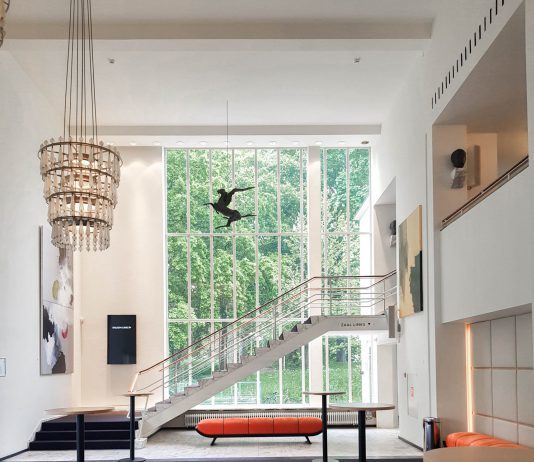
Flexwerken op het mooiste terras van Utrecht, waar dagelijks beroemdheden over de vloer komen en waar je omringd wordt door iconische architectuur van begin 20e eeuw. Onwerkelijk? Nee hoor, bij de Stadsschouwburg wordt je uitgenodigd om je te laten inspireren. Of je nou komt werken, overleggen, vergaderen of gewoon een lekker kopje koffie wil drinken. De Stadsschouwburg Utrecht is sinds kort een van de unieke Powerd By S2M locaties.
Verrassende kennis in een veelzijdig netwerk
De Stadsschouwburg is meer dan alleen theater. Er is een grote veelzijdigheid aan kennis aanwezig. Zowel voor als achter de schermen; van tekstschrijvers tot technici, van acteurs tot bartenders. Samenwerken, kennis delen en van elkaar expertise leren gebeurt al veel bij de Stadsschouwburg. Ondanks dat, is de Stadsschouwburg altijd op zoek naar onverwachte, relevante ontmoetingen. Ontmoetingen die kunnen leiden tot innovatie, creatieve oplossingen en prikkelende samenwerkingen. Daarom is de Stadsschouwburg nu ook een Seats2Meet locatie. Wie weet ben jij wel die expert die een training kan geven aan het hele team. Of degene die op een creatieve manier gebruik maakt van de overvloed aan ruimte, met als tegenprestatie jouw sociaal kapitaal. Durf te vragen, en vind samen met de Stadsschouwburg de oplossing.
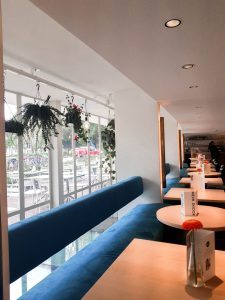
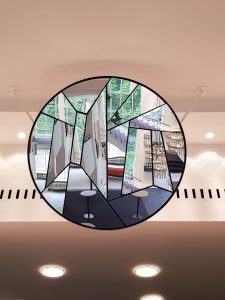
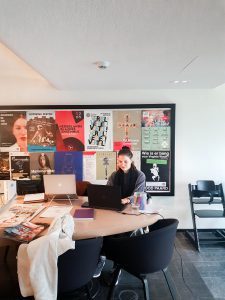
Genieten van de rust in de middag en kom tot leven in de avond
In de avond komt de Stadsschouwburg tot leven. Gedurende de dag is er een oase van rust. De klassieke, iconische uitstraling van het pand maakt het een stijlvolle locatie om gefocust te werken. Een fantastische plek om bijvoorbeeld af te spreken met zakelijke partners. Toe aan wat ontspanning na een dag flexwerken of vergaderen? Het restaurant van de Stadsschouwburg, de Zindering, is net zo creatief en uniek als de schouwburg zelf. Geniet niet alleen van smakelijk eten, maar laat je ook inspireren door bijzondere programma’s: van culinaire proeverijen tot bezinning op zzzzzondag.
Laat je inspireren door cultuur
De Stadsschouwburg ademt cultuur. Niet alleen door de voorstellingen en hun podiumkunstenaars, maar ook de architectuur. En dat voel je. Alles is aanwezig om mensen in de spotlight te zetten. Deze locatie is alles behalve standaard. Of je nou op zoek bent naar een klassieke vergaderruimte, gebruik wil maken van een foyer, op het podium wil staan of een échte theateropstellingen wil met alles erop en eraan. De Stadsschouwburg denkt mee over jouw wensen.
Flexwerken en elkaar ontmoeten kan in café Mevr. Dudok gedurende de dag. Maandag t/m zaterdag kan je vanaf 10.00 tot 17.30 uur terecht om te werken. Ben je op zoek naar een vergaderruimte? Mail dan naar verhuur@ssbu.nl of bel +31(0)30 23 24 151.
The post Drie redenen waarom de Stadsschouwburg een unieke S2M locatie is appeared first on Seats2meet.
April 29, 2019
Christian Busch about the Future of Work – Today
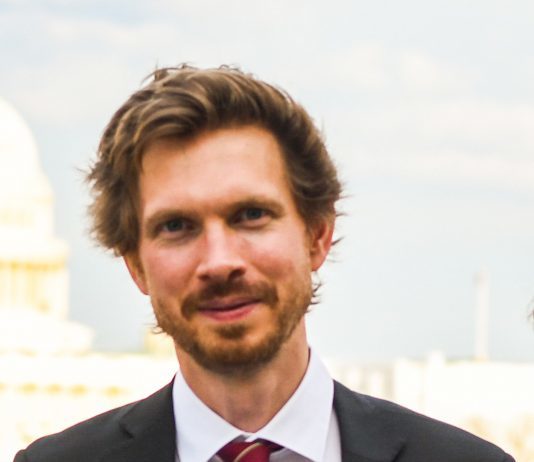 In anticipation of “How about the Future of Work – Today” conference, which is taking place in London on May 9th, we decided to get to know its speakers a little bit better.
In anticipation of “How about the Future of Work – Today” conference, which is taking place in London on May 9th, we decided to get to know its speakers a little bit better.Let us introduce Dr. Christian Busch, the first speaker of the event.
Christian teaches on purpose-driven leadership, innovation, emerging markets, and the future of business at New York University (NYU) and at the London School of Economics (LSE). He is a co-founder of Leaders on Purpose and the Sandbox Network, and served as Deputy Director at the LSE’s Innovation and Co-Creation Lab.
Christian’s upcoming book on ‘Cultivating serendipity’, which will be published in June of 2020, has been a finalist for the Financial Times/McKinsey Bracken Bower Prize.
We have interviewed Christian to get to know his perspectives on the Future of Work.
Why did you decide to take part in “How about the Future of Work” conference? Why do you think is it important to talk about it?
The world is changing fast – most assumptions that we might have taken for granted a few years ago have changed. It’s a great opportunity to share ideas on how to get fit for the future.
What can we expect from your expertise? What kind of questions/topics are you going to raise on the 9th of May?
I’ll talk about an area that I’m particularly excited about: How can we cultivate serendipity* for ourselves and for others so to be able to navigate uncertainty? I believe that this will be the single most important life skill in life and work over the next decade. The last 10 years of my research as well as my community- and company- building efforts point towards the finding that the most successful, joyful, and delightful individuals – and their companies – have developed approaches that enable them to make the best out of whatever happens. Paradoxically, they (intuitively) cultivate serendipity. In my talk, I will share approaches and stories that can help us get inspired and apply this in our own lives and workplaces.
* Unexpected encounters/insights that lead to positive outcomes.
What is the future of work for you?
When I look at the world, I am excited – because (almost) everything is socially constructed. It’s just made up. Every organizational structure, every process, every approach was put into place by someone, and is malleable. I don’t know how the world will look in 10 years, not even in 5 years. There are just too many moving pieces out there, and exponential change means everyone who claims they know how the world will look like even in a year is doing that based on assumptions that will probably have to be revised soon. But what I do know is that if we equip ourselves with the capability (organizations) and muscle (individuals) to be able to make the best out of the unexpected and to cope with this uncertainty, we will be among those that will see the future of work as an opportunity rather than a threat.
What kind of questions do you have for the audience?
I’d be delighted to learn how they navigate the unexpected. How much of their life in organizations and beyond has been defined by the unexpected? What have they learned on how to navigate it? What is their favourite serendipity story, and what we can learn from it?
Thank you, Christian! Looking forward to meeting you on the 9th of May!
Follow Christian on Twitter: @ChrisLSE and get your ticket for “How about the Future of Work Today” conference to meet Christian in person!
The post Christian Busch about the Future of Work – Today appeared first on Seats2meet.
How Neuromarketing Will Change The Way We Do Traditional Marketing

Neuromarketing has been around for a few years now, but its impact on the marketing environment cannot be overlooked at all cost. If you are wondering what it is and how it will change the traditional marketing techniques, here is a brief definition and how neuromarketing operates.
What is neuromarketing?
Neuromarketing is about applying neuroscience in marketing. It allows researchers to use technology to observe biometrics as eye tracking, heart rate, facial coding, galvanic skin response, etc. and brain activity. It helps companies satisfy the needs of their consumers and ensuring that they offer exceptional performance, and give them all the vital supplements and goods. With neuromarketing, it becomes easy to identify what your consumers want and how to meet their demands without losing the company focus and expectations. With this marketing technique, you can comfortably tell what interests an audience by looking at their eye direction while looking at their screen.
How will it change traditional marketing?
Applying neuroscience in marketing environment gives marketers a unique way of acquiring information from consumers. Using traditional marketing techniques, you are likely to find biased information as people will respond to your survey questions according to what you want to hear. On the other hand, neuromarketing gets in the mind of the consumer and evaluate their experience.
Ease processing information
It is easy for a consumer to say they want something but ends up investing in another. Therefore, with traditional marketing skills, a company might find itself making lose as clients will not be interested in what they initially requested. This is what makes neuromarketing effective compared to traditional marketing. Marketers will not depend on what consumers are saying but will respond to what their subconscious is saying. Additionally, this technology makes it easy for investors to invest in things that will receive better reception on the market. It also ensures that a company can process information from respective consumers and make an appropriate decision.
Identifies issues in advance
In traditional marketing, it is not easy to identify a problem and come up with a mechanism to solve all at the same time. For this reason, marketers are likely to find themselves off balance or twisted in the middle of several issues. However, when you introduce the use of neuroscience marketers are likely to find out about an issue long before it starts to escalate and affect your business strategy. While traditionally you would only get general information concerning a particular development. With neuromarketing, this will not be the case for you. It guarantees you can identify an idea while in its earlier stage and come up with techniques to solve or overcome it before it affects your business operations strategy.
Additionally, with this marketing strategy, it becomes quite easy for a marketer to communicate with the target audience and bring them on board while making decisions. Therefore, assuring you that you are not running the company alone but as a team.
Saves you money
Using other marketing techniques will require you to advertise your expectations through several mediums. However, neuromarketing allows you to connect with your audience directly without other platforms. Since it connects to the brain functionality of a person, you will not need to advertise new products but rather set them on the market and monitor consumer’s reaction. Therefore, instead of investing in building ads, you can use that money to produce products and send them to the market.
Provides accurate data
Going out and talking to random consumers helps an organization know the stand of their product in society. Unfortunately, there are higher chances that you can communicate with surrounding communities but still miss an opportunity to meet with actual consumers of your brand. Therefore, whatever findings you will collect will not be a true reflection of what real consumers expect. However, with the introduction of neuromarketing, it will be easy to identify real consumers by the way they respond to survey questions as well as arrange their thoughts. Therefore, when a company decides to return to the expectations of its audience, it will be comfortable as it will be directly dealing with its actual consumers.
Easy to connect
Neuromarketing gets to the mind of a consumer direct. Therefore, you will not have to keep thinking about what might work for a particular group of consumers. Instead, you will connect with their mind directly and find out what works for them.
Conclusion
Traditional marketing skills are essential of a starting business. However, if you are willing to take your business into another level, then involving neuromarketing technology is a step in the right direction. It guarantees that you can collect real-time data and act on it accordingly without guessing what your clients might be interested to know from your business. Additionally, neuromarketing is affordable, and it is growing rapidly across the business community.
The post How Neuromarketing Will Change The Way We Do Traditional Marketing appeared first on Seats2meet.
April 26, 2019
S2M Festival Connecting Stories – de video en een oproep aan alle modern werkenden
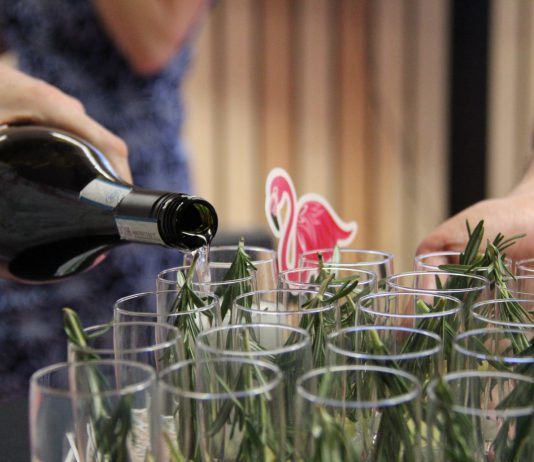
29 maart 2019 vierden we de feestelijke heropening van Meeting Plaza Utrecht met het S2M Festival Connecting Stories. Een festival met bijzondere verhalen over modern werken, georganiseerd in samenwerking met de Werkvereniging. Als zp’ers moeten wij samen sterk staan tegen een overheid die maar blijft geloven in oude oplossingen. Oplossingen die niet meer toereikend zijn voor hoe wij als modern werkenden nu leven en over werken denken.
Modern werkenden zitten niet meer 40 jaar lang vast aan een contract, maar werken afwisselend in loondienst, als zp’er of wat ze ook maar willen. Ze verdienen hun geld soms op bijzondere manieren en verdienen soms veel meer of minder dan je nodig zou denken te hebben. Hoewel elke modern werkende zijn leven anders inricht, zijn we straks wel allemaal de dupe van de keuzes die de regering maakt. Wij kunnen daartegen op staan en een vuist maken, als we ons verenigen in de Werkvereniging.
In deze video zie je de geweldige vibe en de bijzondere meemakers die dit festival tot een succes maakten. Wil je meer weten over modern werken en de Werkvereniging? Ga dan snel naar de site, download het geweldige magazine dat werd gemaakt met een groot deel van de meemakers van dit festival, of meld je meteen aan als deelnemer van de Werkvereniging, zodat we samen een vuist kunnen maken tegen de veranderingen die de huidige regering wil doorvoeren.
Tijdens de quiz aan het einde het festival kwam naar voren hoe ingewikkeld het eigenlijk allemaal in elkaar zit nu we van de huidige (oude) manier van werken over moeten naar een nieuwe manier van werken en samenwerken en organiseren. Michel Kolenbrander bracht het debat dat gevoerd werd in kaart in deze tekening.

The post S2M Festival Connecting Stories – de video en een oproep aan alle modern werkenden appeared first on Seats2meet.
Drie redenen waarom Work&Learn het geheime wapen is voor young professionals
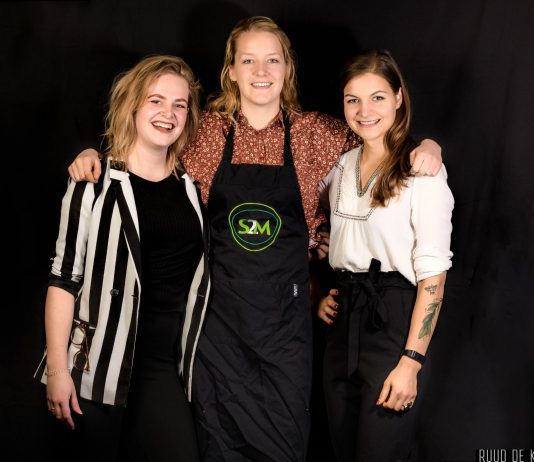
Je zit vol goede plannen en ideeën, maar je weet niet hoe je moet beginnen. Hoe vertaal je al die energie naar een baan en een functie? Het goede nieuws is, bij Seats2meet denken we niet in functies, maar in wisselende rollen. Wie het Work&learn programma volgt zit in een rollercoaster van ontwikkeling. Je probeert, je traint, je werkt samen en je komt jezelf tegen. Hierdoor groei je niet alleen als young professional maar ook als individu.
Voor alle medewerkers is de invulling van het Work&learn programma verschillend. De basis bestaat uit gezamenlijke trainingen om onze dagelijkse werkzaamheden zo goed mogelijk te doen en om als team goed samen te werken. Daarnaast heeft iedereen binnen het programma de kans op zoek te gaan naar mogelijkheden om zichzelf te ontwikkelen. Dit kan door trainingen te volgen die je persoonlijk verrijken. Maar ook door binnen het team verantwoordelijkheid te pakken voor bepaalde werkzaamheden en rollen.
Anne Willemsen – Een startup en lekker koken
Dankzij Seats2meet heb ik de stap kunnen en durven te zetten naar het opstarten van mijn eigen bedrijf – Kinderfeestjes op een unieke locatie. Ik ontmoet relevante contacten op de locatie die mij hierin verder helpen. Werken bij Seats2meet geeft mij de mogelijkheid mij te ontwikkelen op verschillende vlakken, zo werk ik deeltijd in de keuken en volg ik een training die mij helpt mijn ideeën voor mijn nieuwe bedrijf om te zetten in concrete acties.
Anne-Pim van Oostveen – Nieuwe mensen, nieuwe wensen
Al in de eerste maand zag ik tijdens het werk dingen die ik graag wilde oppakken en verbeteren. Verrassend snel kreeg ik daar de kans voor “oke, ga het maar doen” was de reactie. Sindsdien heb ik de werving & selectie voor het W&L programma uitgewerkt en mag ik op zoek naar fijne mensen om ons team te versterken. Om er voor te zorgen dat deze nieuwe teamleden zich welkom voelen en zich de werkwijze van Seats2meet snel eigen kunnen maken houd ik me ook bezig met het inwerktraject. Een intensieve training adviesvaardigheden kwam hierbij uitstekend van pas.
Tessa van der Hart – Communicatie ins en outs
Meestal heb ik wat tijd nodig om op gang te komen. Zo ook tijdens het Work&Learn traject. Toen ik na een paar maanden mijn plekje had gevonden, wou ik mijzelf wat meer uitdagen en nóg meer te halen uit W&L. Het is mooi dat je kan proeven van verschillende rollen en daarmee mag experimenteren. Ondanks dat ik geen journalistiek of grafische opleiding heb gedaan, ligt schrijven en vormgeving mij wel. Dus toen er in maart het Seats2Meet festival voor de deur stond, heb ik gevraagd om mee te helpen. Samen met de rest van het team heb ik langzamerhand de communicatie daarvan overgenomen. Nu ben ik naast werken in service ook bezig met de gehele communicatie vanuit seats. Niet alleen voor aankomende festivals, maar ook voor het online magazine. Door middel van interviews, artikelen, locatiebezoeken etc. Hierin krijg ik de vrijheid om samen met het team ideeën te bedenken, uit te proberen en mijn creativiteit toe te passen.
Geïnspireerd door onze verhalen? Durf jij in te stappen in deze rollercoaster van ontwikkeling en innovatie? Ga dan naar de Work&Learn pagina en neem contact met ons op. Wie weet maak jij binnenkort deel uit van het leukste team in Utrecht!
The post Drie redenen waarom Work&Learn het geheime wapen is voor young professionals appeared first on Seats2meet.
April 25, 2019
Hoeveel tic-tacs in 1 doosje, en waarom niet 1tje meer?

Is er leven na de dood, of komt de dood na het leven?
Hoe kunnen knuffels gratis zijn? want ze krijgen is toch geven?
Hoeveel tic-tacs in 1 doosje, en waarom niet 1tje meer?
Als een lemon een citroen is, wtf zijn dan limoenen?
Waarom eet je frietjes met je handen, en aardappels met een vork?
Is een kleur eigenlijk een eigenschap of gewoon een stukje licht?
Waarom moet ik naar de waarzegger met een afspraak?
@Lucky fonz.
Ik ben groots fan van Lucky Fonz. Vragen stellen kan hij als geen ander. Zijn teksten zijn scherp, simpel en diepgaand.
Vragen stellen helpt niet alleen om verbindingen aan te gaan, om samenwerkingen te laten slagen maar ook om te groeien als persoon, professional of bedrijf. De sleutel tot wijsheid is weten welke vragen je moet stellen. Er zijn complete trainingen in het leven geroepen om de juiste vragen te stellen aan google om zo goed mogelijk antwoord te krijgen.
“The key to wisdom is knowing all the right questions.”
~ John Simone
Welke vraag helpt jou aan een miljoenen idee?
In de Journal of the Academy of Marketing Science wordt er onderzoek gedaan naar innovatie door “customer coproduced knowledge”. Vragen stellen is van essentieel belang om deze kennis en inzichten naar boven te krijgen van je klanten. Ook in het boek ‘Getting to innovation’ van Arthur B. VanGundy schrijft hij maar liefst 11 hoofdstukken over “How Asking the Right Questions Generates the Great ideas your company needs.’
Ontdek het zelf. Stel je vragen en krijg altijd antwoord in het S2M Passport.
The post Hoeveel tic-tacs in 1 doosje, en waarom niet 1tje meer? appeared first on Seats2meet.
April 19, 2019
What will our working life look like in 2040?
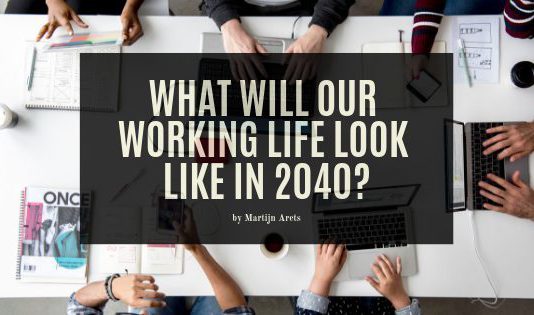
Invited to a 5 minute pitch addressing attendees of the ‘Festival for Modern Workers’, I was asked to give a sneak peak into the future of work. What will our working life look like in 2040? Which are going to be our greatest challenges and opportunities? And what is going to be the major task of the Werkvereniging , a group professionals working towards modernization of the labor market, supporting modern forms of work, life and learning. I decided to form my speech as a plea for the future of work, which I gladly present.
Interestingly we speak about 2040, yet not even understanding our current times. 2040 is a long stretch away. In 2040, I may be grandfather and my children Joep, Sophie and Anna may have finished their studies. Although they won’t have stopped learning, neither will have I.
If one would ask a tech optimist what working life would look like in 2040, surely he would be of the opinion –I’m implying a he, as chances are he would be a man– that technology will have solved all our issues by that time. Wonderful, as we don’t have to take any responsibility right now. The problem lies in the fact that tech optimists tend to forget that ratio doesn’t beat emotion and that success of technology is found in facilitating people, not in leading them. Something, on a side note, many so-called leaders might want to reconsider.
If one would ask a flex working optimist an identical question, the imagined worker would appear as an empowered happy individual, hopping from project to project. Someone who keeps learning for a lifetime and who works to live and doesn’t require much government intervention. He or she will fend for himself or herself. A beautiful utopia stemming from a certain bias of the world being equal and honest, all people being able to choose for themselves what they would like to do and everyone overflowing with ambition.
If one would ask an optimist on social securities, say someone of a trade union, the same question again, the answer would be that everyone has a fixed job, would work in accordance with collective labor agreements and they would pay their monthly contribution without any delay. There is no need to wait for 2040 to understand that this model starts to crumble within the Netherlands and at many other places this system has once flourished.
If one would ask a platform optimist, someone from the category I belong to, the what working life would look like in 2040, I would state that platforms lower transaction costs, solve information asymmetry, enable the individual to market his or her skills optimally, facilitates temporary cross-border and cross-bubble cooperation, and that data and review scores will have replaced diplomas by 2040, but hopefully even quicker. I would argue that those capitalistic platforms, where workers are dependent on, will have been replaced by cooperative and decentralized variants and the considerably downsized government will guarantee social securities ‘by design’, hence equalling the playing field for everybody.
Anyone claiming to know what 2040 will look like, lies like a trooper. All our statements on what 2040 could be are more or less wishes spoken from the perspective or bubble we’re living in at the moment.
All very well, so let’s be clear about that. What I may be able to share is what I personally hope working life would look like in 2040. And what the ingredients would be to possibly end up at that point.
What I hope to see, is that our working life by 2040 looks somewhat like the following: In 2040, we would have found a balance in ways technology is empowering the individual in a facilitating manner. Workers will organize themselves through platforms in a way that fits them well. Not confined to borders or descent, nor the temporary nature of a formation and giving equal chances to everyone. Continuously developing and simultaneously valuing and judging on actual added value. Not based on the privilege of the bubble you belong to and which bubble you support. With the correct, ever changing, balance between on and off, gearing up and slowing down.
When we would like to have a world of equality and equal chances as a central element, it implies that by then we will have take a step back. Which also means that the definition of success will have to be rewritten. However much we may be complaining, we are still part of the lucky 1% of the world’s population. Don’t feel guilty about it, but be aware of your position.
With a more fluid role of working individuals, a more fluid framework is needed to follow suit. All verticals, sectors and collective labor agreements will have been crushed by horizontal thinking and social securities will have been unlinked from their dependency on working relationships. I might even drop the B-word of Basic Income. Better even: basic facilities and social securities for everyone. We will have noticed that all chit-chat about generations X, Y, or Z has been short sighted. Every individual has different needs during each phase of life. Generations differ, but we’re still humans after all, all clichés included. A more fluid system will be essential. I hope we’ll be at that point in 2040.
But hope buys you noting. Time to talk actions. What steps are there to be taken now in order to reach the utopian 2040 scenario?
Currently, I observe a world in which several parties with historical interests have entrenched themselves. And from that position beyond the reach of daylight they keep trying to survive. Living in a continuous phase of denial. I also notice that very few parties dare to take their responsibility and that new initiatives are received with great enthusiasm, but all stakeholders are greatly lacking urgency, the guts and the ambitions to pull through seriously.
To achieve the 2040 scenario, a change of system will be needed. To reach such an objective it will show to be essential that our past, interests, fear and ego lose their dominant role in the debate and we all admit that we’ve realized, “We have no clue what we should do.” The good news is: you are not the only one. Starting from vulnerability, without being trapped in sectors and verticals, we can start building together. Recognizing that each and every one of us, coming from whatever background, is also a willing and good person. In the end with the same goal as the party he or she now despises and might even consider his or her greatest enemy.
Exchanging our ‘have to’ for a ‘want to’, our ‘it’s impossible’ for a ‘how can we make it work’, our focusing on ourselves (single stakeholder) for a focus on us (multi stakeholder), and our ‘walking out’ for recognizing and taking on responsibilities. Ultimately, it is the responsibility of ALL stakeholders together. Nobody excluded. So it’s your responsibility as well. Even when 2040 sounds comfortably far away, it does not exempt you to keep burying your head in the sand.
What could be the role of an organization like Werkvereniging in all of this? I see a role as initiator, connector, catalyst, bridge builder, incubator and in ‘practice what you preach’. Even Werkvereniging has to exit its own bubble and step on the gas of ambition. If we want to make the 2040 scenario happen, we should all start the expedition together. Yes, I’m in favor of it.
The post What will our working life look like in 2040? appeared first on Seats2meet.



